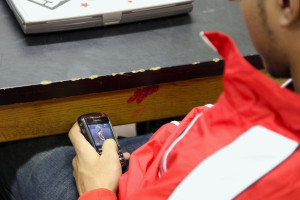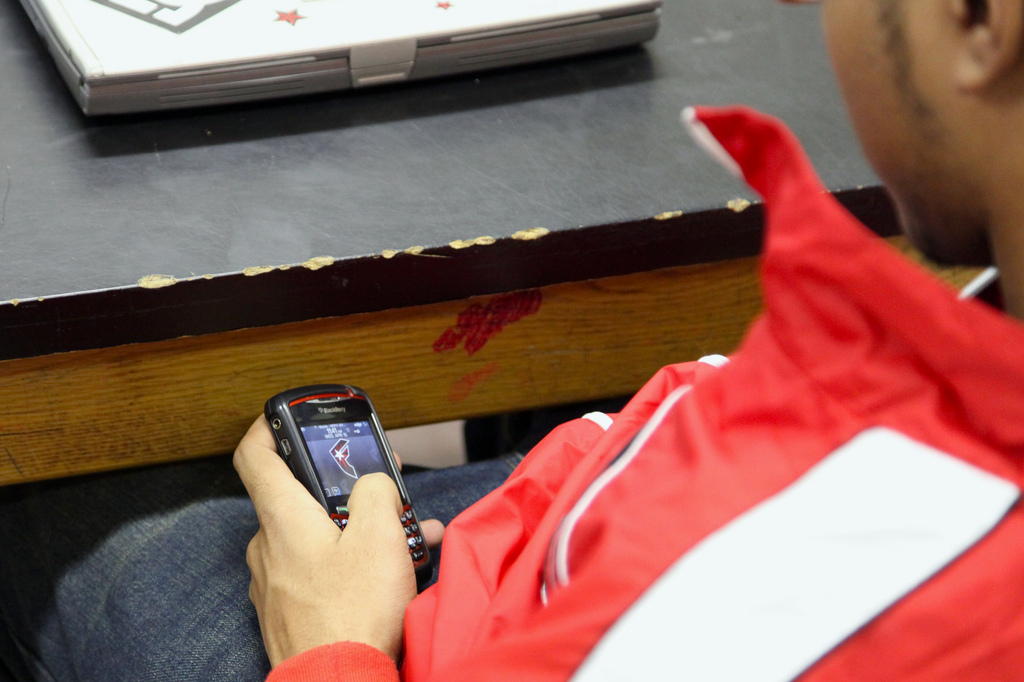>> Over the years, I’ve been involved in many battles of wills in my high school classroom. Sometimes I win, but every time I lose.
Over the years, I’ve been involved in many battles of wills in my high school classroom. Sometimes I win, but every time I lose.
That moment when your heart rate starts to escalate and you feel the warmth in your face? When heads are turning from their work to watch what is going to happen? When you and the student eye each other, neither of you exhaling? Those are all the moments right before, no matter what happens, when you both are about to lose.
Because even if I end up victorious with the student’s cell phone in my hand, or with him skulking to the principal’s office, or with her begrudgingly turning to the right page in the book, I’ve wasted class time, fostered a hostile environment, and lost my chance to connect with that student.
Worse, if that student refuses and I write her up for “willful defiance” or “insubordination,” she (at most schools) will receive in-school-suspension (ISS) or short-term suspension (less than 10 days). While this might make my classroom a little easier to manage, it makes it harder to teach that student and harder for that student to learn.
It’s also been shown that “students who are involved in the juvenile justice system are likely to have been suspended or expelled. Further, students who experience out-of-school suspension and expulsion are as much as >>10 times more likely to ultimately drop out of high school than are those who do not.”
And, surprisingly, rather than make the classroom a more effective place to learn by suspending students, >>test scores go down for the non-suspended peers who remain in the room .
The good news is that >>North Carolina’s suspension rates were down almost 20 percent in 2013-14 from the previous year. Forty-two percent of those suspensions were at the high school level, also a decrease from 2012-13.
The bad news is that, according to the >>Department of Public Instruction’s report , one in ten high school students will be suspended. That student is 2.8 times more likely to be male than female, and significantly more likely to be black.
It also boggles my mind that so many elementary and middle school children are being suspended. If we put aside the lack of learning that occurs during those days home (an average of 3 days per suspension), think about the parent who needs to take time off work to stay home with their child, the lack of social resources like counseling, and the lack of follow up upon the child’s return to school.
Pam Gray, the executive director of >>Rebound , a nonprofit organization in Durham which is a strength-focused intervention program for students serving short-term suspensions, says that suspension doesn’t address the problem or that it is a short-term solution that doesn’t do anything to resolve the actual issues, and since there is no evidence that suspension improves students’ behaviors or makes schools safer, there has to be alternate strategies.
I agree. Maybe we need a >>law like California’s that bans K-3 suspensions for minor infractions like talking back to the teacher and dress code violations. Maybe it’s time and support services, like Gray recommends, to provide mediation for the kids, since most suspensions are because of conflicts between peers, staff, or administration. Maybe it’s training for teachers and administration in what needs to be handled right then in the classroom and what will turn into a power struggle. Maybe, until suspension rates drop dramatically, we need more organizations like Rebound and it’s model >>Boomerang in Chapel Hill. Whatever it is, we need it to keep kids in the classroom.
To learn more about effective methods of discipline, check out this 2015 report from the Duke Center for Child and Family Policy: “>>Instead of Suspension: Alternative Strategies for Effective School Discipline.”
>> Jennifer Brick is a writer and teacher in Durham, North Carolina. She earned her Masters of Fine Arts in Creative Nonfiction from Goucher College. Follow her on Twitter @jenbrickwrites.
Jennifer Brick is a writer and teacher in Durham, North Carolina. She earned her Masters of Fine Arts in Creative Nonfiction from Goucher College. Follow her on Twitter @jenbrickwrites.

There are no comments
Add yours